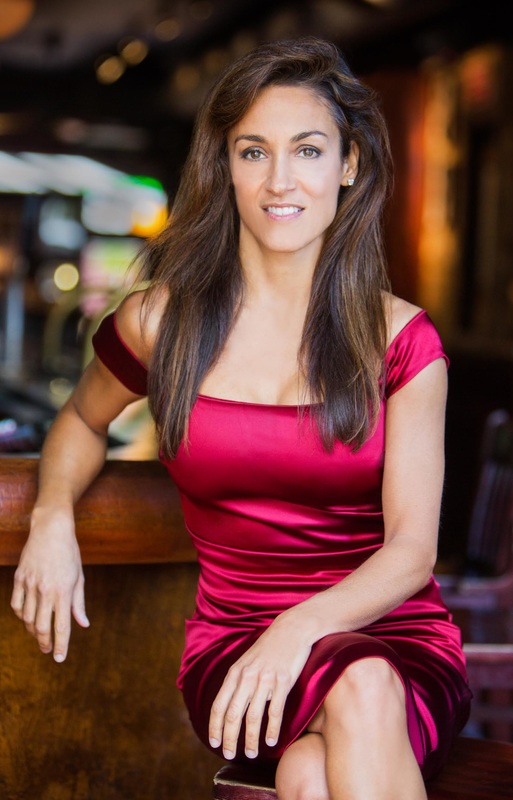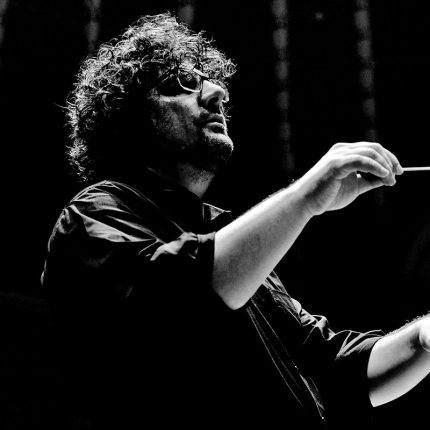CCO offers a pleasing mix with premiere of Boustead concerto

The Chicago Composers Orchestra (CCO) emerged from a winter-long hibernation to give its first concert since last October Thursday night in Roosevelt University’s Ganz Hall.
With a singular mission to play works by living composers, this ad hoc chamber orchestra occupies a unique niche in Chicago’s new music landscape. The ensemble packs a punch to boot, tackling programs with the flexibility and punchiness of a small sports car.
Led by music director Allen Tinkham, Thursday’s program eschewed thorny serialism for more tuneful idioms. For a new music concert, the CCO’s repertoire was relatively traditional—no electronics, no eclectic instrumentation, no unconventional directions.
The calling card was the world premiere of local composer, presenter and radio host Seth Boustead’s Piano Concerto No. 1. Other valuables rounded out the program: Jonathan Bailey Holland’s The Party Starter, tailed by music of Pulitzer Prize winners George Walker and Bernard Rands.
Holland’s three-minute Party Starter (2010) has the vibe of an old-school big band, rendered in orchestral technicolor: hi-hat hits, syncopation, and punctuated brass are overlaid by richly-scored strings. The jazzy chord progression which starts the piece becomes a central motif, beginning in the piano and eventually restated in the entire orchestra. The overall result is delightful, if schmaltzy, and was given an enthusiastic interpretation by Tinkham and the CCO.
Composed for the new millennium, Walker’s Tangents (1999) relies as much on moments of silence as pungent dissonances. The piece—also short, at just five minutes long—tends to break up its many thematic developments with beat-long breaks, as though allowing the orchestra to catch its breath before changing course. Tangents calls for almost instantaneous interplay between sections, and the agile CCO delivered, ricocheting lines from section to section with ease.
At 15 minutes, Rands’ London Serenade was the most substantial offering of the concert’s brief first half. But modern-day Cockaigne Overture this is not; deceptively, the British-born, Chicago-based Rands named the piece for dedicatee Edwin London, the former conductor of the Cleveland Chamber Orchestra.
The piece thrives in contrasts: tonality and atonality, homophony and polyphony commune throughout the work. One representative moment comes in the form of a dusky clarinet solo (played superbly by Shaun Flynn), which continues over understated, suspended harmonies in the strings before abruptly refracting into an orchestral kaleidoscope. The CCO’s razor-like brass and, especially, the full-bodied strings made a compelling case for Rands’ piece.
These short pieces were presented as preludes to Boustead’s First Piano Concerto, subtitled Satori, and premiered by soloist Marta Aznavoorian. “Satori” is a Zen Buddhist term which roughly translates to the quest for inner enlightenment, and the piece is accordingly arranged as a series of abstract musical self-portraits; respectively, the four movements represent a frustrated artist, introspective drinker, idle improviser, and flamboyant piano virtuoso.
However, for the most part, the premise of Boustead’s first foray into the concerto genre proved more consistently interesting than the actual music. Each movement utilizes Satori’s solo part differently: the first in brooding stepwise passages and explosive outbursts; the second through tonally ambiguous, minimalist wanderings; the third in an incessant, heavy-footed ostinato; and the fourth through unapologetic, extroverted expressionism.
In an effort to keep its piano protagonist at the fore, Satori’s accompaniment often sounded too simple, with moments of blocky, bland orchestration. Too much of the piece left one feeling as though something was missing.
Yet the narrative shape was highly effective. For example, the second movement depicts a sake drinker attempting to clear his mind, only for invasive quotidian thoughts to burst in at random; accordingly, the serene atmosphere of the movement was repeatedly interrupted by strikes on a texturally misplaced snare drum.
The latter movements presented two visions of the mature Boustead: the real-life composer, improvising over a left-hand ostinato, and the concert pianist he’d aspired to be in his youth, fingers dancing up and down the piano. This alignment—as well as the dreamlike cadenza which connects them—poignantly contrasts reality with what could’ve been. Even so, Boustead’s piece has difficulty standing on its own; the emotional power of this moment derived less from the music itself than the background knowledge afforded by the program notes.
Luckily, Satori found an impassioned advocate in Aznavoorian. Her sculpted playing and assured touch demanded attention to even the most innocuous solo piano lines. Playing with power and command throughout, the most daunting material of the outer movements posed no challenge.
Despite being composed of rotating ranks of freelancers, the CCO under Tinkham performs with the cohesion of a long-established chamber group, and the individual musicians—mostly fresh-faced graduate students—are superb. Regardless of the to-be-announced program of its next concert on April 22, hearing this ensemble alone is worth the trip.
Posted in Performances





